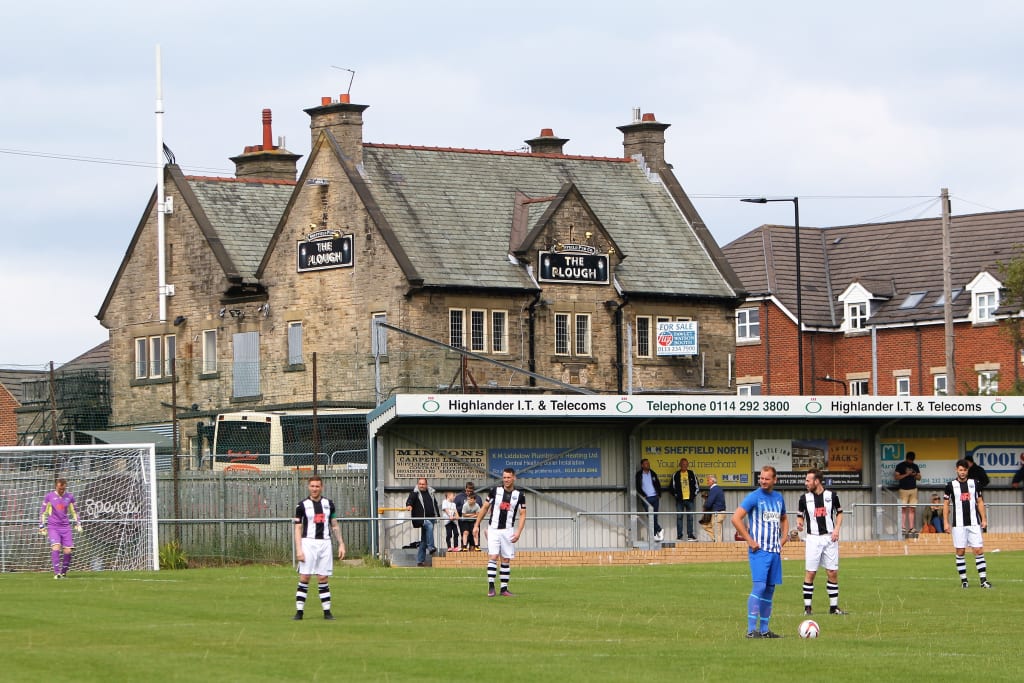Ploughing on
A piece of soccer history gets a reprieve from the wrecking ball

Sheffield is a city steeped in football history – and part of that heritage has been preserved against the odds.
The Plough Inn, overlooking the historic Sandygate ground in the western suburbs of the South Yorkshire city, was scheduled for demolition. Even the local planning officers supported a scheme that would have seen the 19th-century watering hole levelled and replaced by housing. However, the city council rejected the proposal, in no small part due to the pub’s place in the birth of the beautiful game.
Historians believe The Plough is where the so-called ‘Sheffield Rules’ were first codified in around 1860, just as Hallam FC was forming and playing its first matches across the road at Sandygate. Those Sheffield Rules gave us things like corners, free-kicks and headers; refinements of the modern game emerging from the scrum of bodies chasing balls through the streets on high days and holidays. But history alone doesn’t pull pints: the shutters have been down for some time – when I visited Hallam in 2017 it was closed and there were plans to turn it into a shop. This month’s victory over the developers takes the pub’s story into extra time, but unless or until the local community can bring it back to life it will still be hovering around the metaphorical relegation zone.

There’s hope. The Plough’s value has been recognised. Local activist Ruth Milsom helped to campaign for the pub to be named an ‘asset of community value’, a status that offers some protection against redevelopment. But at a time when many pubs have been lost despite their community ties, she added that it was ‘highly symbolic’ that Sheffield City Council had reprieved The Plough. Speaking to the Sheffield Star, she added: “We must all now get to work to devise a really prosperous future for The Plough as an attractive modern asset to the community.”
Local councillor Anne Murphy, who lives ‘just around the corner’, is on board. “Other cities would be trying to bring the building back to life and promote it as an asset to the city, not tear it apart,” she said.
Saving the pub could help to reinforce the football heritage of this leafy corner of Sheffield. Out here, on the edge of the Peak District, the Steel City loses its sharp edges. Hallam, nicknamed the Countrymen, reflect a different era of Sheffield’s history; this was the suburban growth where the Victorian middle class moved as it made its money from the industry down in the valleys.
The Sandygate football ground preserves some of that heritage. True, there isn’t a fine old Victorian grandstand. For much of Hallam’s long history, this was little more than a fenced off field shared with the local cricket club. It wasn’t until the English football pyramid began imposing stringent ground grading requirements that things began to change. Floodlights appeared in 1992, the current stand, a corrugated iron and brick affair, followed soon after.
The past is more apparent in the clubhouse. Just inside the door, a replica of the Youdan Cup is proudly displayed. First contested in 1867, five years before Royal Engineers AFC defeated Wanderers to win the first FA Cup, the original is believed to be the oldest football trophy in the world.

Things were a bit different back then. While the Sheffield Rules, ploughed over seven years before, introduced many recognisable features of modern football, today’s fans would be baffled by the resolution of Hallam’s 0-0 draw against Norfolk in the final. The 3,000 strong crowd at Bramall Lane saw the trophy awarded to the team that scored the most ‘rouges’. The goal, just four feet wide, was flanked by two red flags, 12 feet apart. Shots that missed the target, but went inside the flag were chalked up as near misses – ‘rouges’ to match the colour of those flags. In the event of a draw, going close was the tie-breaker. Hallam won by two rouges to nil but didn’t get to enjoy traditional post-game revelry with their prize, which was still awaiting its finishing touches at a local manufacturer.

When I visited Sandygate, Hallam was licking its wounds after an unrewarded near miss. The club fell just short of promotion to the Northern Counties East League Premier Division the previous season, but started the 2017/18 campaign with an FA Cup extra-preliminary round upset at home to Bootle. This was the preliminary round; the oldest surviving knock-out competition on the oldest ground. No new chapter of Hallam’s history, though, overpowered 4-1 by Atherton Collieries in the Sheffield sunshine.
Game details
Aug. 20, 2017
Sandygate Road, Sheffield
FA Cup Preliminary Round
Hallam 1 Atherton Collieries 4
Att: 302
For more pictures from my visit to Hallam, click here.
About the Creator
Andy Potts
Community focused sports fan from Northeast England. Tends to root for the little guy. Look out for Talking Northeast, my new project coming soon.






Comments
There are no comments for this story
Be the first to respond and start the conversation.